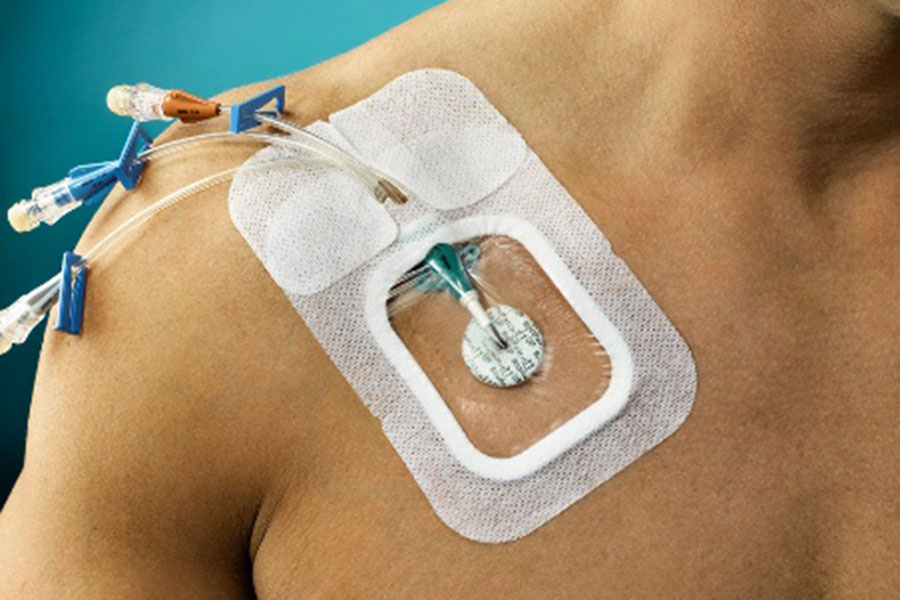Strict attention to infection control practices is standard of care to any preventive strategy to central line infections. This responsibility for prevention falls on healthcare providers as well as patients who have central lines in place. This week we will focus on the responsibility of the healthcare providers. Stay tuned next week for the patient’s responsibility!
[sep]
During insertion of a central line:
- Hand washing – Proper hand hygiene is crucial to reducing nosocomial infections in the health care setting, as healthcare workers’ hands are frequently contaminated by organisms acquired from their patients and the immediate environment. These organisms can be easily transmitted to other patients if hand hygiene is not practiced.
- Skin antiseptic – Use of a skin antiseptic on the patient decreases the amount of skin flora at the site of catheter insertion. Current recommendations are for an alcohol-based chlorhexidine solution be applied to the skin surface and allowed to dry prior to line insertion.
- Making sure the skin prep agent is completely dry before inserting the central line
- Sterile precautions – Use of ALL 5 maximal sterile barrier precautions is required to minimize infections risk. They are:
- Sterile gloves
- Sterile Gown
- Cap
- Mask
- Large sterile drape
Once the central line is in place:
- Follow central line maintenance practices outlined by the healthcare facility – Every facility that performs central line insertion should have guidelines and procedures in place to care for and maintain a healthy central line site. These guidelines are based on recommendations from the Centers for Disease Control, Infusion Nurses Society, Joint Commission and other regulatory agencies that utilize best practices to make their recommendations.
- Wash hands with soap and water or alcohol-based hand wash before and after touching the line.
In addition, the sooner a central line is removed, the chance of infection is less likely. Therefore it is important to remove a central line as soon as it is no longer needed.











